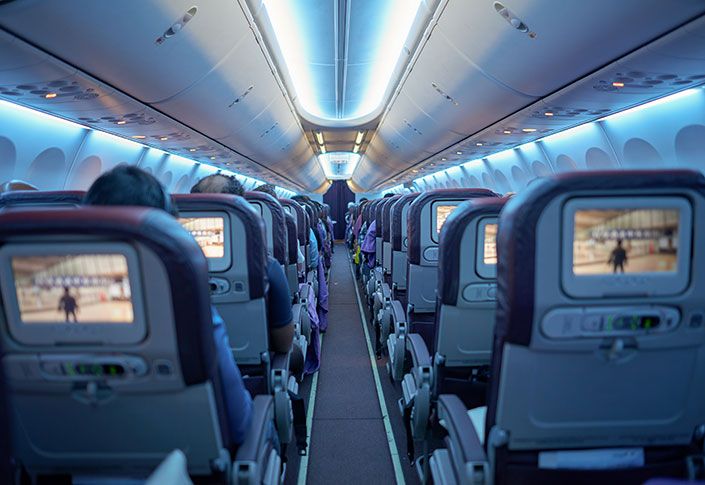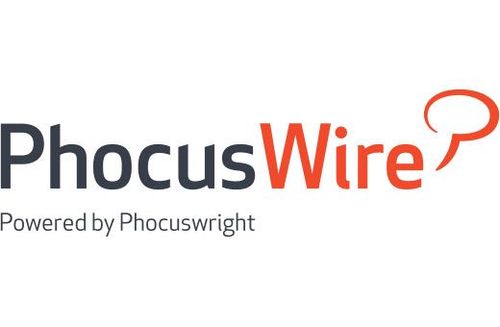Where travel agents earn, learn and save!
News / How to use communications to rebuild confidence, get passengers back on planes
Communicating confidence is critical in bringing travellers back

May 25 - Airlines face a number of challenges when it comes to restoring passenger confidence. Alongside airports and other industry peers, they need to understand what passengers need in a post-COVID-19 world.
First and foremost, they will need to feel they can trust their airlines, airports and governments to safeguard their health and address their concerns.
But this is just the tip of the iceberg.
Passengers must also be willing and able to navigate new regulations and legislation, understand and accept new cabin configurations, onboard safety procedures and immigration controls on arrival.
These will likely vary according to destination, route and passport type and change considerably over time.
Therefore, the airline must understand the psychology of the passenger to address these potential stress points and build confidence to fly.
The challenge will also be to tailor this amongst the myriad of cultures, ages and personas.
The common denominator in all these passenger confidence challenges is information. Getting relevant, accurate and timely information to different passenger types in a language they understand by a channel they are listening to is the only way to build back this confidence.
5 key steps to build passenger confidence
1. Before a passenger gets anywhere near a flight they have to make a booking
There will likely be some concerns during this process, even if the passenger has now made the decision to fly.“How does this airline’s sanitisation policy differ from another’s? What if there is another outbreak in my destination – will my airline give me a refund or if I’m already mid-trip, will they get me home?”
The loyalty tables have been reset by COVID-19 - airlines must take this opportunity to build new loyalty through information on processes.
Use abandoned cart technology and personalized marketing to reassure and provide creative options.
2. Passengers need airlines to interpret the latest regulatory information
This process must be specific to the customer and communicated in a personalized way, via the channel they are listening on and at the time they need it, not before (when it will be missed), or after (when it is too late).Following 9/11, the security legislation changed rapidly (shoes on/shoes off, liquids allowed/liquids not, additional pre-screening required, or not etc.), sometimes on a weekly basis.
Until the major markets and IATA lead countries with standardisation this is inevitable, however, until this point, the airline must handle this situation with responsive and flexible processes and most importantly, information.
3. Once armed with this personalized information, passengers will have to take some action
complete a form, give permission for personal data to be accessed or navigate to a particular area for pre-boarding at the airport with similarly categorized passengers (antigen vs antibody vs vaccination vs. nothing for example). Allow them to do this with seamless, straightforward technology. Self-service is key here.
4. On-board, the passenger’s experience will likely be very different from what they are used to
Regardless of the whole middle-seat question, crew looking like they’ve come straight from a sci-fi film and additional warnings and regulations about the use of face-masks, communal facilities and onboard service will likely unsettle passenger already on edge for potentially their first flight since the crisis began.Communication to prepare the passenger for these changes is critical as is addressing concerns such as “what if I’m traveling with an infant? What if the guy sat next to me doesn’t stop coughing? What if…? What if…? What if…?”
5. Over-communication during the recovery phase is okay
Your passengers will understand and appreciate what you’re trying to do. If you get the personalisation, accuracy and timing right, there’s no such thing as over-communicating anyway.
An industry challenge, not that of just one airline
As governments start to permit and even promote travel within domestic and local geographies or between “friendly” (read safe) partner countries, bringing vital impetus to the industry, at the same time they risk creating silos in an industry which needs to stand as one.A global collaboration led by IATA will allow airlines to stabilize the advice and regulations being given to passengers and increase overall passenger confidence levels at a faster rate than by tackling these problems as individual airlines, airline groups or alliances.
An industry-wide crisis requires an industry-wide response and it is my opinion that IATA must lead this.
With the right approach – and one that is consistently supported by everyone across the industry – PhocusWire believes they can build passenger confidence resulting in more people flying sooner.
Enough of the theory – what do we need to be doing today?
As a key conduit between airlines and their passengers, we have responsibility to understand and address how passenger confidence can be rebuilt from these three perspectives:
• Passenger safety – “If I fly will my health be safeguarded?”
• Personal economic concerns – “Can I afford to fly? Should I do something else with my reduced disposable income?
• If something goes wrong outside of my control will I get my money back?”
• Flying practicalities – “How do I fly?”
Early in the crisis, PhocusWire created a cross-functional COVID-19 Crisis Response team to give the extra support the customers need during this time.
It was created to respond quickly to the new needs of the industry, share guidance and best practice amongst airlines and ensure understanding the passenger and using technology to manage them in a personalized way was the priority.
More Travel News:
Visualizing the Countries Most Reliant on Tourism
Universal Orlando to reopen on June 5th
COVID-19: Flight Insights & Discussing the Future With American Airlines
National Geographic Zoom Backgrounds!











